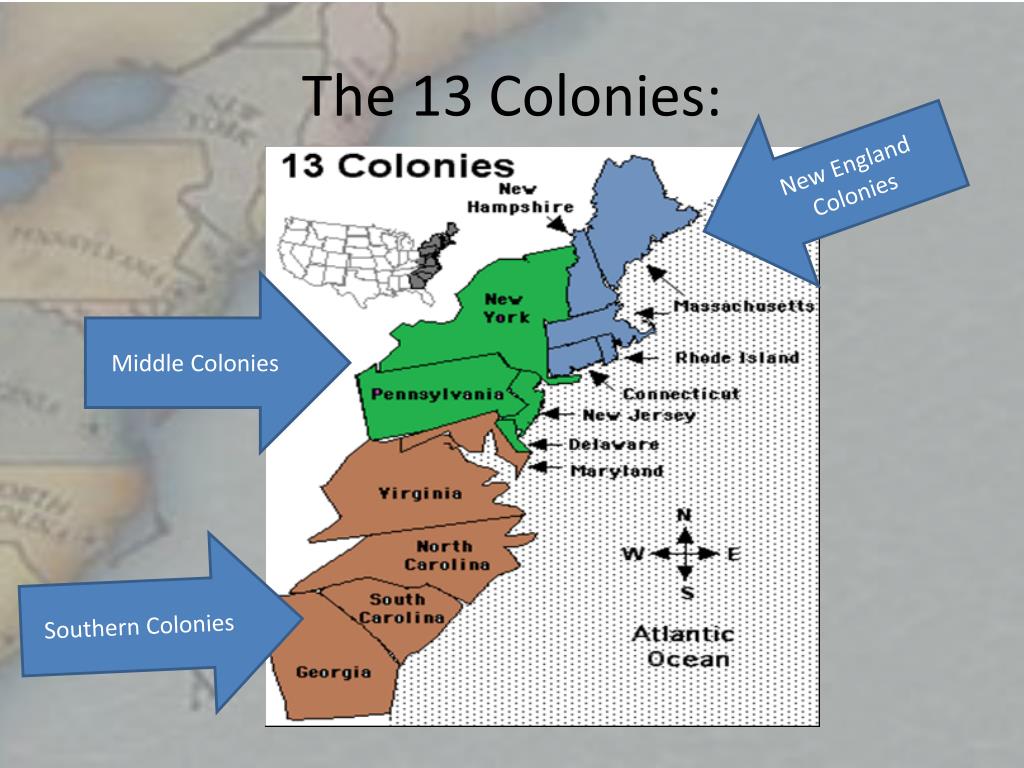
It was these 13 colonies that rebelled against Great Britain and eventually founded the United States of America (see the final section for more information on how this happened).īelow are the original thirteen colonies, separated into three groups based on location: New England Colonies, Middle Colonies, and Southern Colonies. Many of them had been born in the colonies and considered themselves “American.” After some failed colonies, such as those at Roanoke Island, and the split of Carolina into the colonies of North Carolina and South Carolina, there were at this point 13 colonies. Britain had an extensive history of colonization, and it wanted colonies in North America for multiple reasons, including to increase their trading opportunities, create new jobs, and bring in revenue from colonial workers and goods.īy 1775, the thirteen colonies had a population of roughly 2.5 million people. In this case, the 13 colonies were located in North America, and they were controlled by Great Britain. We also give background on the colonies and explain how they eventually became independent states.Ī colony is an area that is under the control of another country.

The 13th Amendment to the US Constitution officially made indentured servitude illegal.You’ve likely heard of the 13 original colonies, but how much do you know about them? When were they created, why were they created, how did they gain their independence, and which states did they become? In this guide, we cover all the important and interesting facts about the 13 colonies, including the official name of each colony, when it was founded, and the role it played up to and during the Revolutionary War. This is a reason why indentured servitude faded away. Laws were passed making it easier to get Africans to work on the fields than indentured servants. As a result, the colonies began to import enslaved Africans to work there for life with no pay. However after Bacon's Rebellion, in which many servants rebelled against their overlords, many people didn't trust indentured servants. They usually worked on the field and tended crops. In return the indentured servant would work for a certain number of years on the colony to pay back the money.
#Middle colonies for free#
An indentured servant was a person that immigrated to the colonies for a better life for free because someone sponsored them. Before this, people who would immigrate to Virginia and to other colonies were usually either rich people or people fleeing from religious persecution.

The Virginia company came up with a solution for that. Indentured servants came because the ever growing colonies desperately needed cheap labor. Providence became part of the colony of Rhode Island in 1663.Ī group of Puritans who wanted to separate completely from the Church of England (rather than reform it).Īn English Puritan lawyer who was one of the leading figures in founding the Massachusetts Bay Colony. Many Quakers inhabited the colony of Pennsylvania.įounded the colony of Providence in 1636, after being pushed out of the Massachusetts Bay Colony for criticizing Puritanism. Some Puritans escaped religious persecution in England by moving to the Massachusetts Bay Colony.Ī religious group that believed in nonviolence, gender equality, and resistance to military service.
#Middle colonies series#
Thousands were killed on both sides before the English forces won the war, effectively ending most Native American resistance in New England.Ī series of acts passed between 16 that established three rules of colonial trade: first, trade must be carried out only on English ships second, all goods imported into the colonies had to pass through ports in England and third, specific goods, such as tobacco, could be exported only to England.įounded the colony of Pennsylvania in 1681 as a safe haven for Quakers.Ĭolonies that were under the authority of individuals that had been granted charters of ownership, like Maryland and Pennsylvania.Ī group of Protestants who wanted to purify the Church of England. A military conflict in which the Wampanoag and Narragansett tribes of southern New England joined together to fight against English colonists’ westward expansion. Portsmouth and Providence joined to become Rhode Island in 1663.Īlso known as King Philip's War.

Hutchinson and her followers founded the colony of Portsmouth in 1638. A document that established a representative government in Connecticut, featuring a legislature elected by a popular vote and a governor elected by the legislature.Ī religious compromise that allowed colonists in New England to become partial church members even if they had not had a religious conversion experience.īanished from the Massachusetts Bay Colony for her belief that salvation was based on faith, not good deeds.


 0 kommentar(er)
0 kommentar(er)
